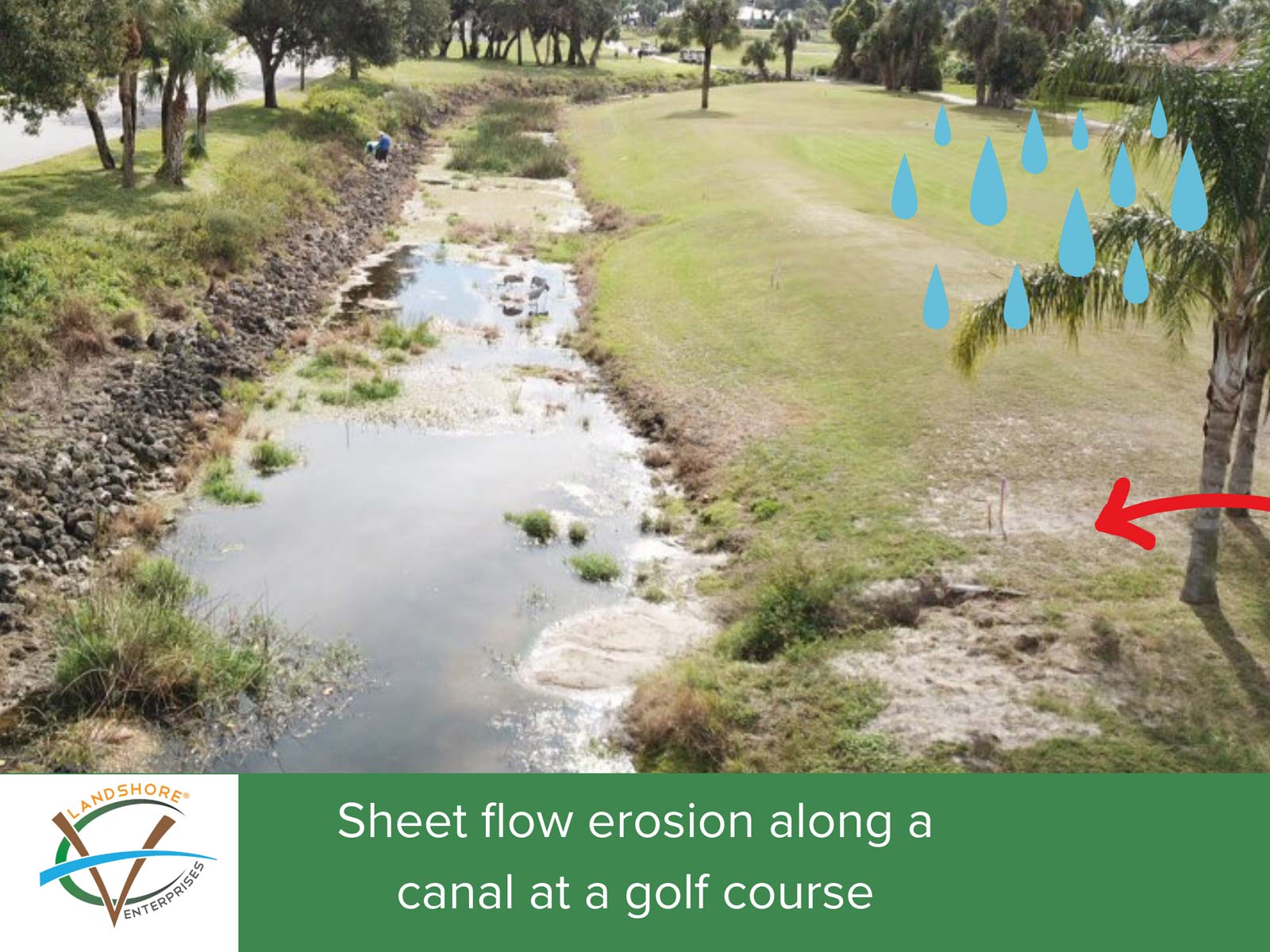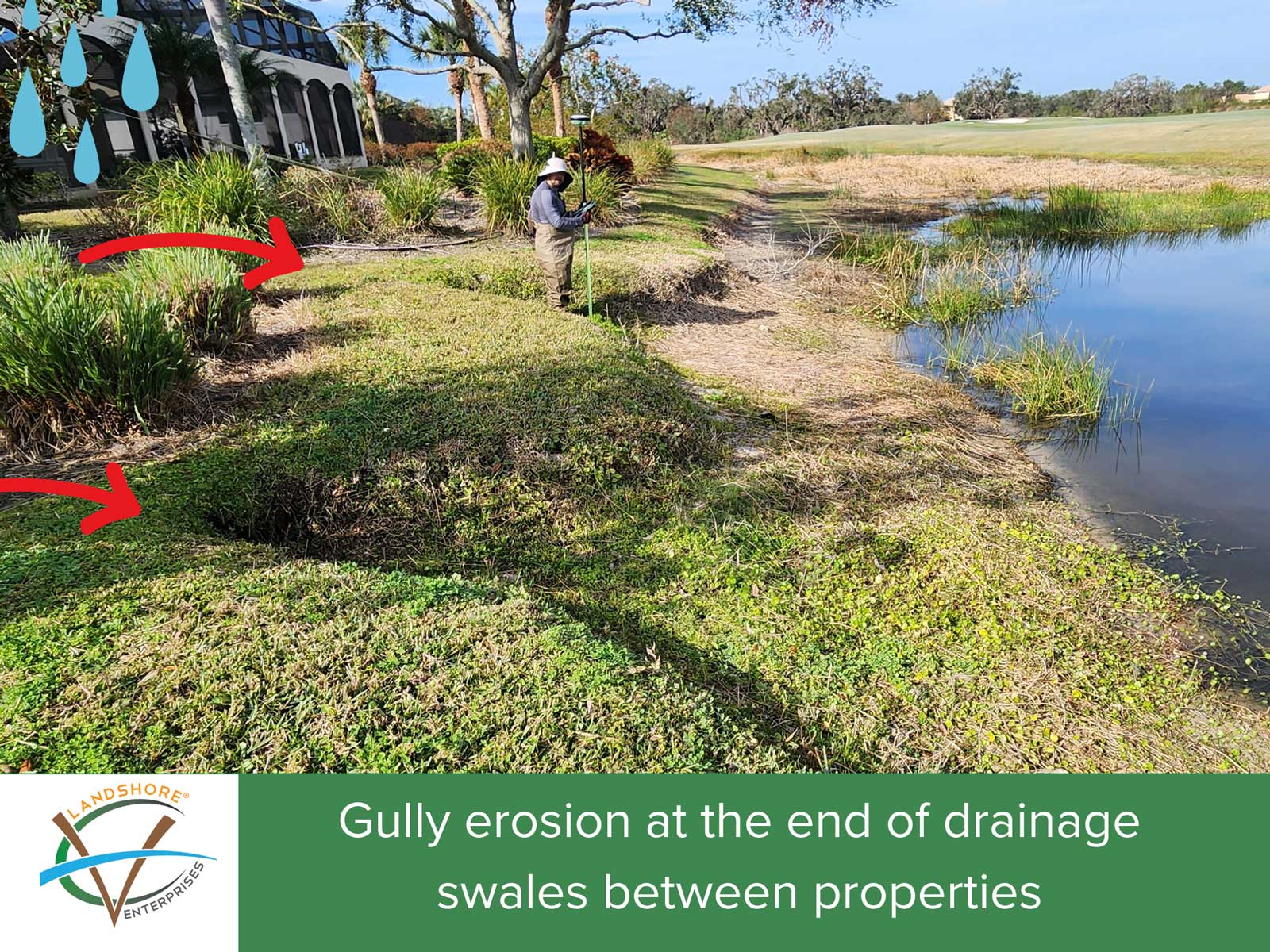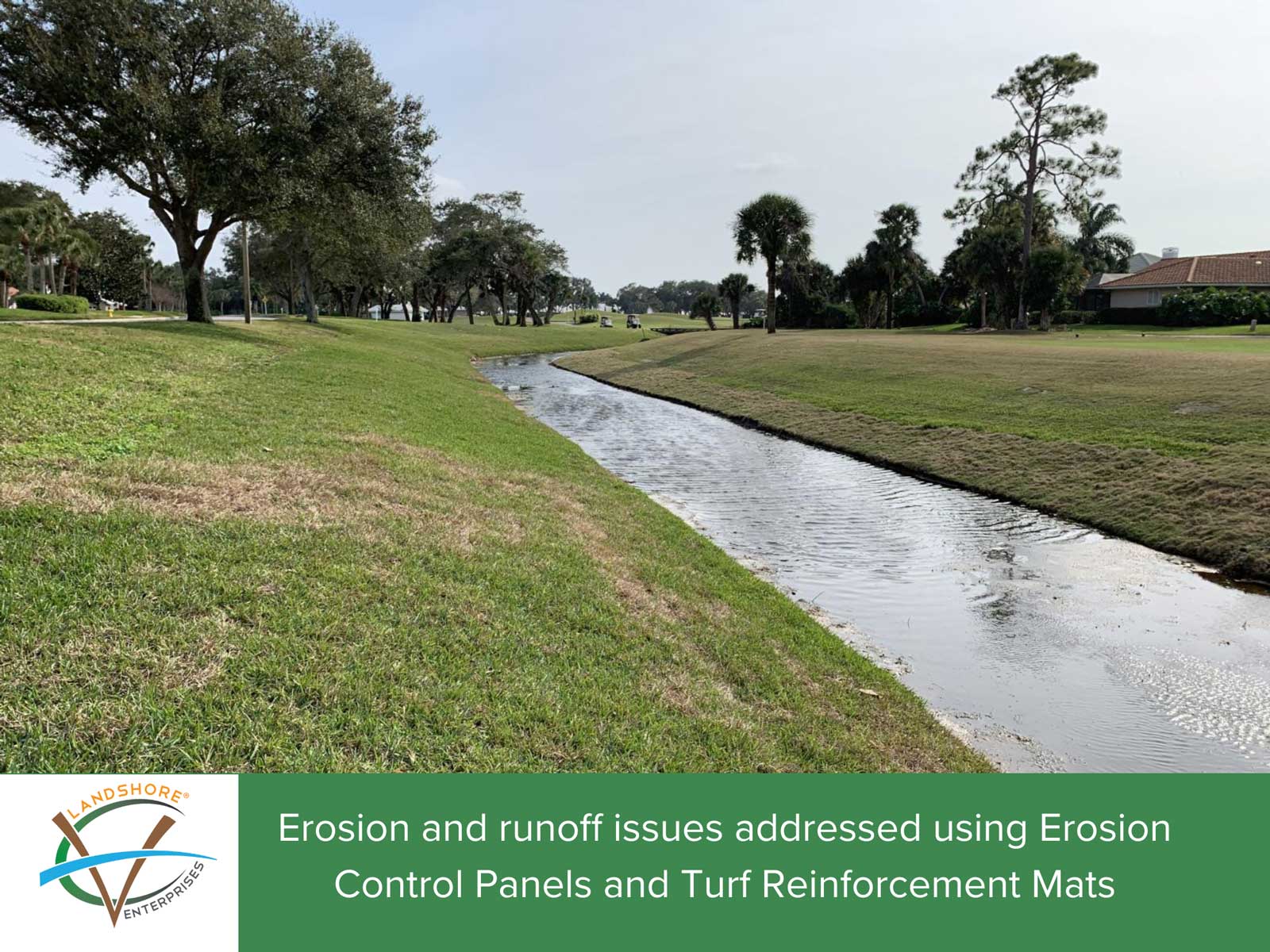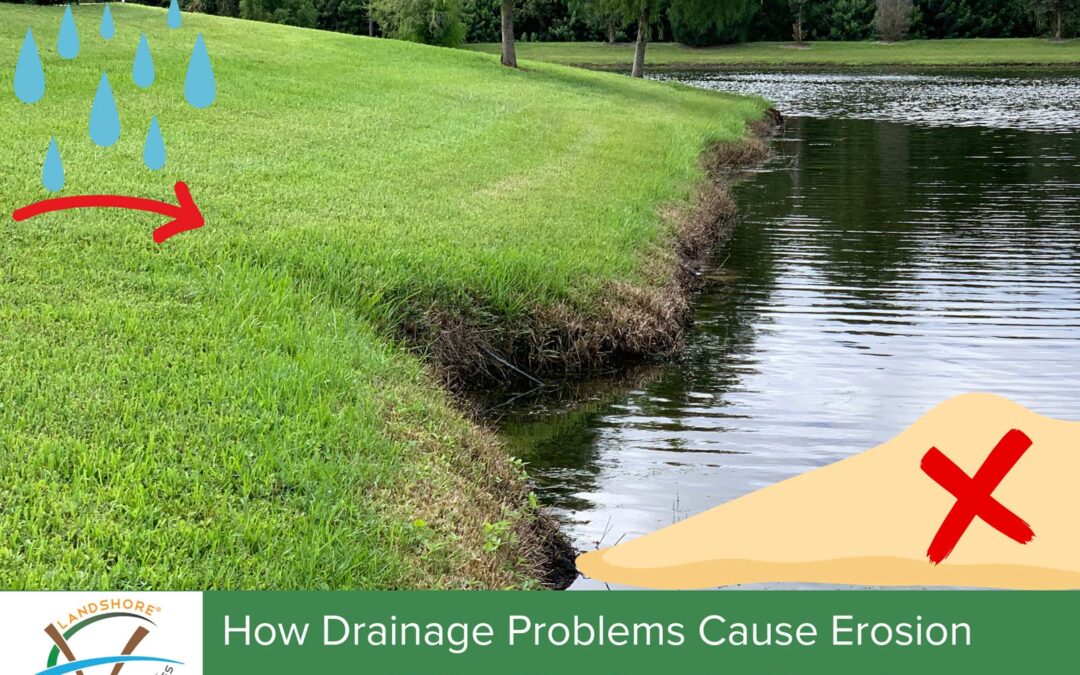Drainage problems and erosion often go hand-in-hand. While they may seem like separate issues, the truth is poor or unmanaged drainage is one of the leading causes of erosion on lakeshores, golf courses, and residential communities.
We’ve seen firsthand how drainage-related erosion—especially in the form of sheet flow and gully erosion—can damage embankments, compromise stormwater systems, and put people and property at risk.
The Link Between Drainage and Erosion
Erosion doesn’t always start with a shoreline—it often starts with how water moves across the land. When rainfall or runoff flows over the surface, especially in areas where drainage is poorly managed, water can gain speed and force, picking up sediment and stripping away soil as it moves.
Two common culprits are:
1. Sheet Flow Erosion
Water spreads out in a thin layer and flows over bare or compacted soil. While it may look harmless, this broad, shallow flow gradually removes the topsoil over time.

2. Gully Erosion
In areas where water becomes concentrated—such as swales, ditches, between homes, or drainage outfalls—it carves deep V-shaped channels called gullies. These gullies are especially destructive, slicing through embankments and destabilizing shorelines.

How Drainage Issues Worsen Erosion
The more concentrated the flow, the more destructive it becomes. We often see severe erosion in:
- Swales and drainage ditches where water picks up speed
- Between property lines where runoff naturally funnels
- Outfalls and low points where drainage discharges without energy dissipation
- Embankments and slopes where gravity accelerates water movement
In these areas, topsoil is rapidly removed, creating unstable slopes and undermining surrounding land. Eventually, water cuts rills and gullies deep into the terrain, weakening the entire structure.
The Problem with “Vegetation-Only” Solutions
While vegetation and aquatic plants can slow water velocity and provide localized stabilization, they do not address the root cause of concentrated flow. In fact, in some cases, relying solely on plants to “cover up” erosion can backfire.
When gullies or washouts are hidden beneath dense vegetation, they form what we call a false edge—a visually intact embankment that hides deep voids and dangerous drop-offs.
These false edges can be:
- Hazardous to lawn crews, who may unknowingly drive over unstable areas
- Dangerous to residents or golfers, who risk stepping into hidden gullies
- Misleading during inspections, leading to underestimated erosion severity
Masking erosion with vegetation isn’t a fix—it’s a temporary distraction from a worsening problem.
How Landshore Addresses Drainage-Related Erosion
At Landshore Enterprises, we don’t just treat symptoms—we engineer solutions based on data and site-specific challenges. Our team investigates the source of runoff and erosion using:
- Topographic surveys and elevation mapping to understand water movement
- Soil sampling and slope analysis to assess embankment integrity
- Hydrologic modeling to simulate storm events and drainage flow
- Visual inspections and imaging to detect false edges and hidden damage
Once we understand the full picture, we design and implement tailored solutions like:
- Energy dissipation features (e.g., riprap, splash pads, check dams, outfall stabilizers)
- Stabilization Methods, like the Erosion Control Panels (ECPs), to reinforce embankments and protect against future erosion
- Sheet piling systems such as Prolock to create a resilient shoreline barrier
- Grading and drainage improvements to redirect and manage surface flow
- Stabilization with turf reinforcement mats or geotextiles, where appropriate

Don’t Wait Until the Next Storm Reveals the Damage
Drainage-related erosion doesn’t go away on its own. Left unchecked, it accelerates with every rain event, degrading your property and increasing future repair costs.
Whether you manage a residential community, a golf course, or commercial stormwater infrastructure, early detection and proper engineering are your best defense.
Ready to Solve Your Drainage and Erosion Issues?
Contact Landshore Enterprises today to schedule a site inspection or engineering assessment. Our team will help you understand the full scope of your drainage problems—and create a lasting solution designed to protect your property.

